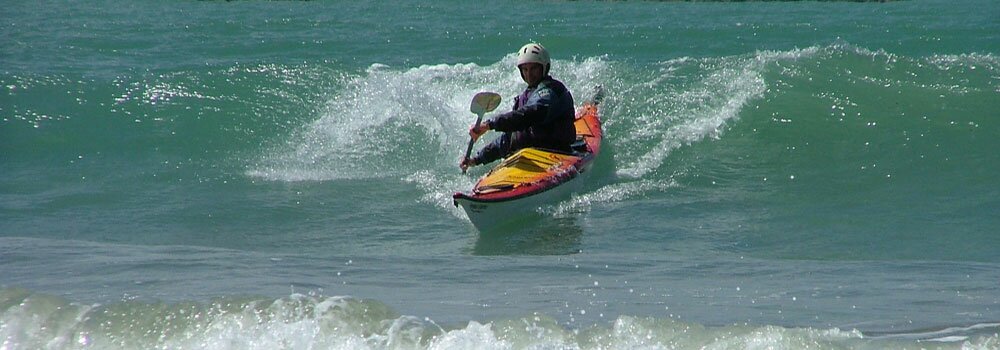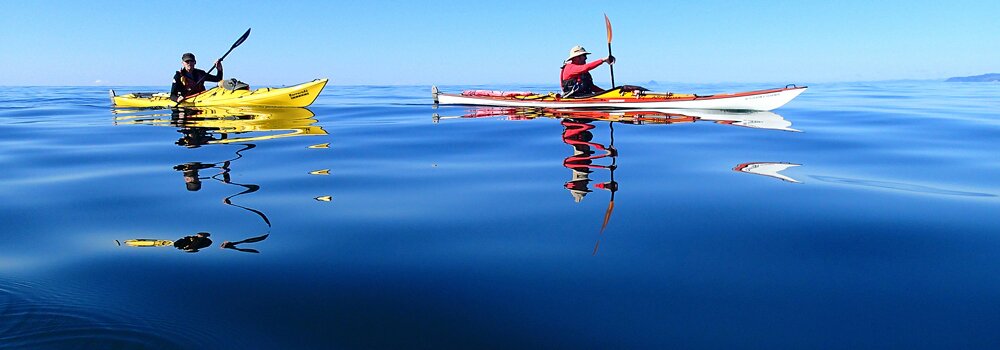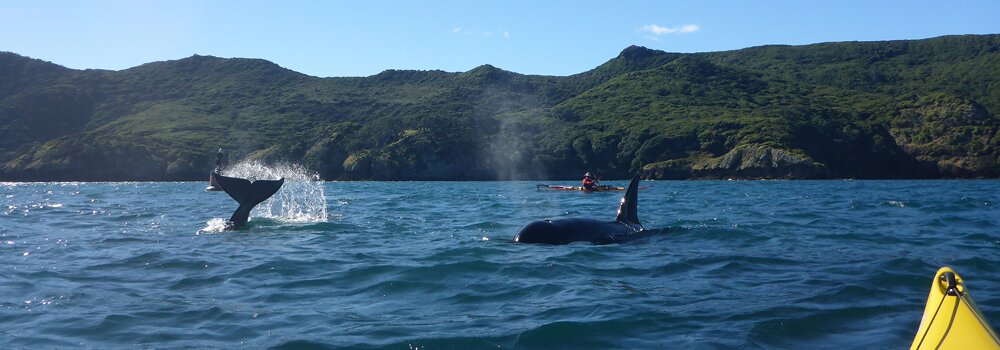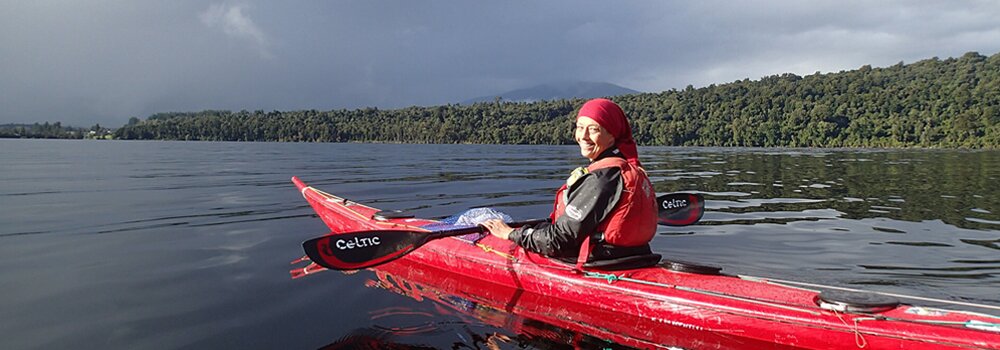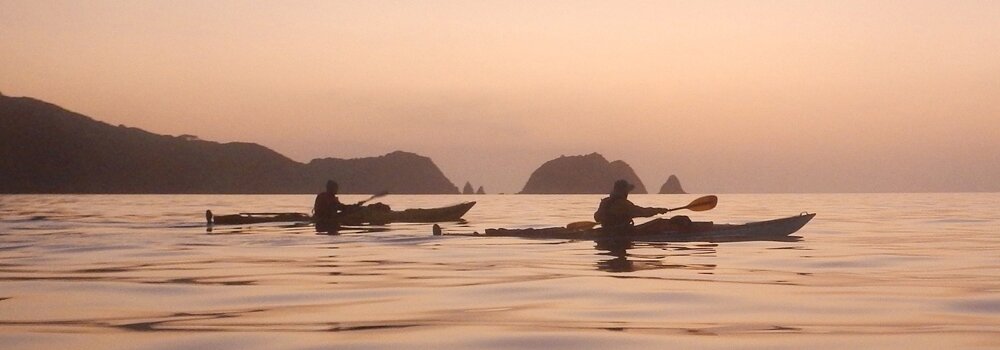Kayaking History
Index
(alphabetical listing)
Choosing a Kayak, things that didn't happen – article
Development of kayaks and equipment
History of Ancient and Modern Kayaks
New Zealand History of Sea Kayaking
The Long Journey Home for a Greenland Kayak
Oskar Speck paddles from Germany to Australia
Kayak not Canoe
This describes the history and evolution of the modern kayak. It is suspected that WWII interrupted the earlier development when Gino Watkins brought kayaks to England and demonstrated their use in the 1930s.
From Valley Sea Kayaks, the evolution of the modern sea kayak.
The History of Ancient and Modern Kayaks
Evolution of the Nordkapp Kayak by Graham Egarr
Historic kayaks, links to and details of kayaks by Harvey Golden, THE kayak historian.
Arctic kayak articles assembled by David Zimmerly.
The story of Ken Taylor’s Igdlorssuit Kayak by Duncan Winning, OBE.
The modern sea kayak’s history in Britain. This is about the evolution of the Anus Acuta and Nordkapp by Valley Kayaks.
Military Kayaking
Listing of military books about, or with mention of, kayaks. Initially compiled January 2010 by Tony Ford & Paul Caffyn updated 19-09-2012 Military Kayaking PDF (131 KB).
King Island Kayak
In 1997 KASK members, with the help of museum staff, measured, photographed and documented the King Island kayak held in the Canterbury Museum, Christchurch, New Zealand.
See King Island Kayak Survey PDF (385KB).
The Ammassalimiut Kayak
From the Museum National D’Histoire Naturelle, The Ammassalimiut Kayak Technical Evolution. Authors: R.Gessain and P.E. Victor a description of the Ammassalimiut Kayak. This has been translated into English by Kevin Smith.
See The Ammassalimiut Kayak PDF (430 KB).
The Long Journey Home for a Greenland Kayak
Paul Caffyn’s account of his trip to West Greenland and the “return” of the modern Nordkapp sea kayak to its origins.
See West Greenland 1999 PDF (42 KB).
Queenscliffe Maritime Museum Pushes Ahead With Dedicated Sea Kayaking Exhibition Space
Club members David Golightly and Phillip Woodhouse visited the QMM last Friday and witnessed progress in the creation of a special exhibition featuring displays of Paul Caffyn’s 1982 Dreamtime Voyage expedition & Freya Hoffmeister’s 2009 Race Around Australia journey. Both paddlers succeeded in circumnavigating the entire mainland continent of Australia, each of these voyages started and finished in Queenscliff at the entrance to Port Phillip.
To enable visitor viewing of continuous ‘looping’ of photographs from both expeditions, the John Holland Construction Group have kindly donated two complete sets of computer systems to the museum, for dedicated use in the Sea Kayaking Exhibition space.
In other news featuring these two world renowned paddlers it is strongly rumoured that Paul Caffyn is nearing completion of a Twenty-Fifth Anniversary Edition of his popular work The Dreamtime Voyage, which tells the story of his voyage around Australia’s coastline. We have also heard unconfirmed news that Freya Hoffmeister and her publications team are well underway with a book dedicated to telling the story of the first woman to circumnavigate Australia. Read the full article here…
Paul Caffyn – a profile
Caffyn Fuelled (PDF 91 KB) – a profile of Paul Caffyn by John Dowd, founder of Sea Kayaker magazine. This was originally published in Canoe & Kayak, Kayak Touring issue 2005.
KASK Annual Awards – Graham Egarr Memorial Paddle Trophy
By Paul Caffyn
Two beautifully crafted paddle trophies are awarded each year by KASK:
1. Graham Egarr Memorial Paddle Trophy for outstanding contribution(s) to the KASK newsletter
2. Graham Egarr Memorial Paddle Trophy for outstanding contribution to New Zealand sea kayaking
Background
These two lovely trophies were built by kayak builder, John Dobbie, in 1997 to keep alive Graham Egarr’s long and outstanding contribution to paddling, water safety and river conservation in New Zealand.
Development of kayaks and equipment
Some history of kayak development in New Zealand versus the rest of the world
________________________________________
Rudders
The standard 270° retracting rudder was devised in 1981 by one of the pioneers of sea kayaking in Australia, Tasmanian Laurie Ford, and they are now used world-wide.
The V-Trim was tried in Australia by Peter Carter, an over the side setup. See The boat with three rudders. The name V-Trim came from V for Viking. This was prior to 1985.
Nearly a decade later it was redesigned / reinvented and fitted to a Nordkapp in New Zealand by Don Currie and named by Sandy Ferguson, the Southern Viking Rudder. This was sometime (a decade?) after it had been tried in Australia and before either knew of that.
The Daggerboard Rudder by Don Currie was demonstrated at a KASK Forum in Christchurch in 1992. Both Don Currie and Sandy Ferguson independently first tried it on trips to the Abel Tasman National Park and both found a small modification was necessary to stop any jamming by sand. They were fitted to Norski and Challenge Plastics kayaks. A decade later KajakSport in Finland “patented” it , calling it the Navigator Rudder. A decade after that Sea-Lect in USA supposedly applied for world patents and called theirs the Trucourse™ Rudder.
Note, none of these patents would stand due to the rudder being in production by two firms in New Zealand for a decade before the first patent was applied for.
The Smarttrack style, vertically stowed, was fitted to some kayaks in New Zealand in the late 1980s but all of SeaLand kayaks, by the 1990s, had the horizontal stow Daggerboard style as the outdated vertical-stow method can easily be damaged in a surf landing and adds windage if not lowered.
What is now called the Skudder was designed by a number of people long before it became a “new” idea in Britain. A similar type was tried by Peter Carter in Australia and on a German kayak, the Habel. On the Habel the blade appeared to be metal, pivoting in a slot in line with the keel. Both versions appear to have retracted into a largish hole in the keel line. Don Currie’s design slid into a slot the width of a normal skeg slot and looked the same as the Skudder. He fitted them to a couple to imported Skerray kayaks,
________________________________________
Rudderlines
Don Currie demonstrated the auto-adjusting rudderlines at the 1992 KASK Forum in Christchurch and these have become common on a number of kayak steering systems around the world.
________________________________________
Trolleys
The T-bar trolley was conceived by Sandy Ferguson, to get round problems with the other trolley on the New Zealand market at the time being too short fore and aft, stressing the kayak’s bottom and the holding straps. It was used in the Abel Tasman proving that it could carry a loaded double across soft sand. It was detailed in a 1995 CSKNet newsletter and a copy of the issue was sent to Germany. Their version did not include the stand legs as those were not in the magazine article though fitted to all NZ versions.
________________________________________
Kayak designs and manufacturers
There have been at least 4 major kayak manufacturers in New Zealand.
________________________________________
Challenge Plastics (Kerikeri)
Started in 1985 by Alec Bell producing plastic sea kayaks.
Breeze 4.5 m
Sea Quest 5.2 m
________________________________________
Paddling Perfection (Auckland)
Boat builder Ron Augustin founded Paddling Perfection NZ in the 1990s. He started by producing kits for S&G Sea Bears, single and double and then moved to fibreglass production.
PP Sea Touring Kayaks
Sea Bear 5.5 m
Sea Bear Packhorse 5.9 m
Breaksea 5.2 m
________________________________________
Q-kayaks (Ashhurst)
The company was established by Max Grant in the 1970s as a fibre-glassing factory, which specialised in producing top quality competition kayaks for New Zealand’s top slalom and flat-water competitors. In the early 1980s, Q-Kayaks expanded its factory to include the machinery needed to produce the more durable polyethylene kayaks. In 2002, Q-Kayaks expanded again, installing a third kiln, which enabled it to virtually double production.
About Us.
They first moulded the Puffin in 1986, designed in Canada by Nimbus Sea Kayaks, Canada.
Max’s designs & dates –
1989 Southern Aurora composite sea kayak 5 m
1991 Dusky Bay double composite sea kayak 5.8 m
1993 Southern Skua composite sea kayak 5.4 m
1994 Blue Marlin composite sea kayak 5.4 m
1996 Sea Master double composite sea kayak 4.8 m
1997 Penguin polyethylene sea kayak 4.8 m
1997 Foveaux Express composite sea kayak 5 m
1998 Dusky Bay II double composite sea kayak 6.25 m
2000 Torres composite sea kayak 5.6 m
2000 Tui polyethylene sea/estuary kayak 4.5 m
2002 Tasman Express Elite composite sea kayak 5.3 m
2002 Tasman Express polyethylene sea kayak 5.3 m
2005 Shearwater polyethylene sea kayak 4.8 m
2003 Maximus composite adventure racing sea kayak 6.5 m
2005 Dusky Bay Classic double polyethylene sea kayak 5.44 m
2010 Skua polyethylene sea kayak 5.2 m
2011 Southern Endeavour double polyethylene sea kayak 5.6 m
2012 Southern Skua composite sea kayak (modified version) 5.4 m
2015 Sea Hawk composite sea kayak 5.3 m
2017 Production ceases. Some Q-kayak moulds taken over by Mission Kayaks
________________________________________
Sisson Kayaks (Nelson)
Started by Grahame Sisson in 1975, moved to his factory in Nelson in 1978 and to Darfield in 2005.
Who-we-are.
1977 Sisson Kayaks negotiated to build the Nordkapp sea kayak under a one-time royalty licence.
1986 cockpit foredeck higher (increased leg room)
1987 fitted pod seats plus rudders as standard
1987 Puysegur 4.6 m
1989 Southern Light double 6.3 m
1991 Arctic Raider 5.32 m
1992 Pepin 4.9 m
1993 Astrolab 5 m
1996 Southern Light EX double kayak 5.8 m
1998 Selkie (1985 VCP design) 5.03 m
2003 Voyager 6.7 m
Choosing a Kayak, things that didn’t happen – article
This is an article about British kayaks, written by an American importer, but you might find something of interest. It is an interesting document, historical because it was written in 1998 and because a number of “exciting things” just didn’t eventuate or statements were out of date when it was written. It also only mentions two British manufacturers, missing out P&H who have been around for about as long as VCP and Nigel Dennis.
Books on Kayaking
If you thought you might like to read about kayaking, maybe a few titles to read? The attached PDF has a good number of those that have been published, well over 800 titles.
A list of Kayak books 2016
